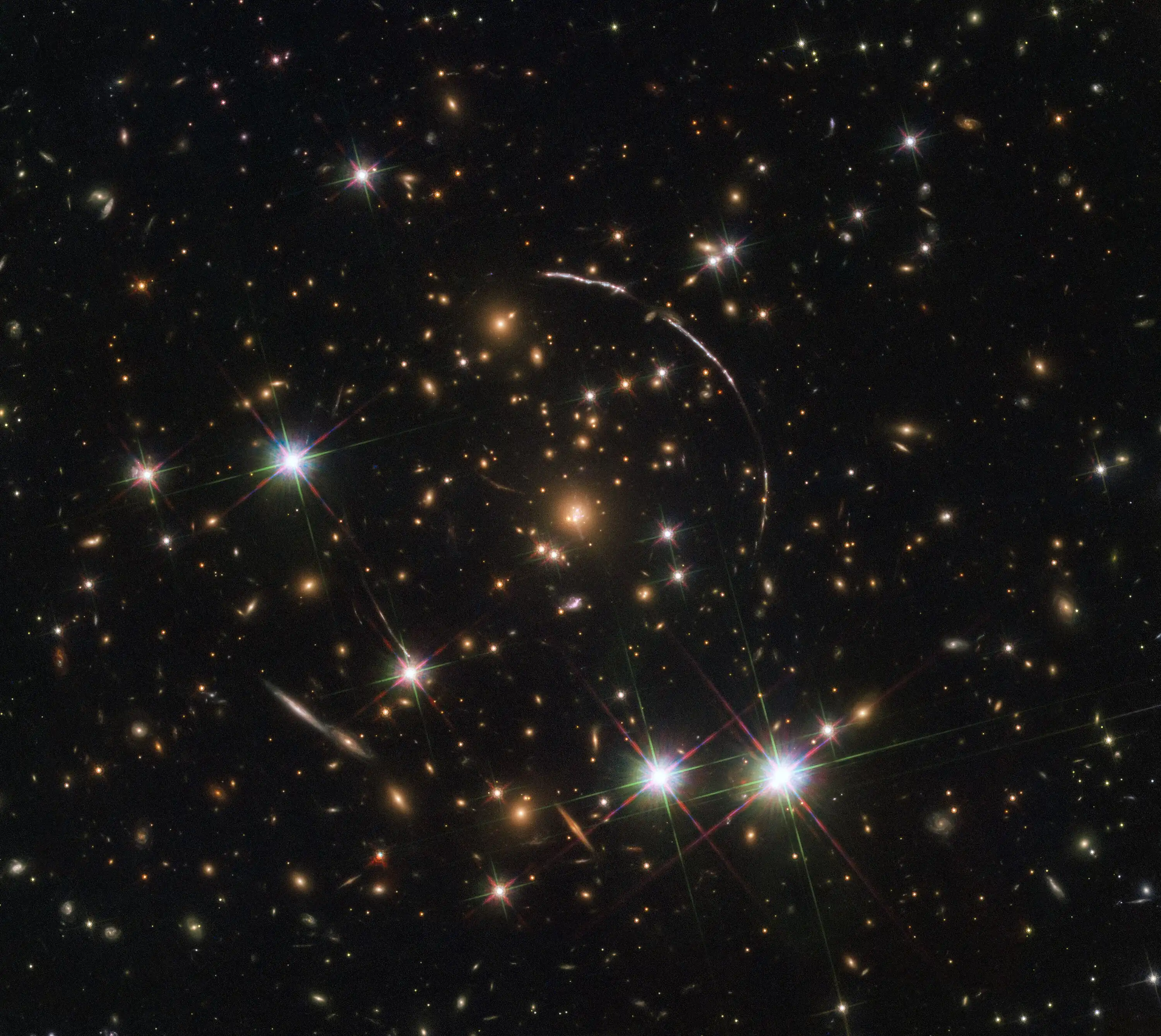 The bright arcs between 12 and 3 o'clock are the Sunburst Galaxy. A fainter counter-image is seen between 7 o'clock and 9 o'clock.[1] Credit: ESA/Hubble, NASA, Rivera-Thorsen et al. | |
| Other designations | |
|---|---|
Sunburst galaxy | |
| Database references | |
| SIMBAD | Sunburst Arc data |
The Sunburst galaxy is a strongly magnified galaxy at redshift z=2.38 (10.9 billion light years) behind the galaxy cluster PSZ1 G311.65-18.48.[2] The cluster acts as a power magnifier thanks to the gravitational lensing effect. The galaxy cluster distorts the space around it creating different paths for the photons coming from the Sunburst galaxy. This lensing creates four arc segment roughly following a circle around the foreground lensing cluster. Chance alignments of the Sunburst Galaxy and galaxies in the lensing cluster breaks up some of the arc segments into multiple smaller images, creating a total of 12 full or partial images of the galaxy along the arc; some of these images are magnified by very large factors.[1][3] In one of these strongly magnified images of the Sunburst galaxy, astronomers have identified the most luminous star known to date, Godzilla.[3][4]
References
- 1 2 Sharon, K.; Mahler, G.; Rivera-Thorsen, T. E.; Dahle, H.; Gladders, M.; Bayliss, M.; Florian, M.K.; Kim, K.; Khullar, G.; Mainali, R.; Napier, K.; Navarre, A.; Rigby, J. R.; Remolina, J.; Sharma, S. (2022). "The Cosmic Telescope That Lenses the Sunburst Arc, PSZ1 G311.65-18.48: Strong Gravitational Lensing Model and Source Plane Analysis". The Astrophysical Journal. 941 (2): 23pp. arXiv:2209.03417. Bibcode:2022ApJ...941..203S. doi:10.3847/1538-4357/ac927a. S2CID 252118367.
- ↑ Rivera-Thorsen, R.; Dahle, H.; Gronke, M.; Bayliss, M.; Rigby, J. R.; Simcoe, R.; Bordoloi, R. (2017). "The Sunburst Arc: Direct Lyman α escape observed in the brightest known lensed galaxy". Astronomy and Astrophysics. 608: L4. arXiv:1710.09482. Bibcode:2017A&A...608L...4R. doi:10.1051/0004-6361/201732173. S2CID 54952450.
- 1 2 Diego, J. M.; Pascale, M.; Kavanagh, B. J.; Kelly, P.; Dai, L.; Frye, B.; Broadhurst, T. (2022). "Godzilla, a monster lurks in the Sunburst galaxy". Astronomy and Astrophysics. 665: A134. arXiv:2203.08158. Bibcode:2022A&A...665A.134D. doi:10.1051/0004-6361/202243605. S2CID 247476158.
- ↑ "Scientists face down 'Godzilla', the most luminous star known". Nature. 610 (7930): 10. 6 October 2022. Bibcode:2022Natur.610T..10.. doi:10.1038/d41586-022-03054-3. S2CID 252598653.